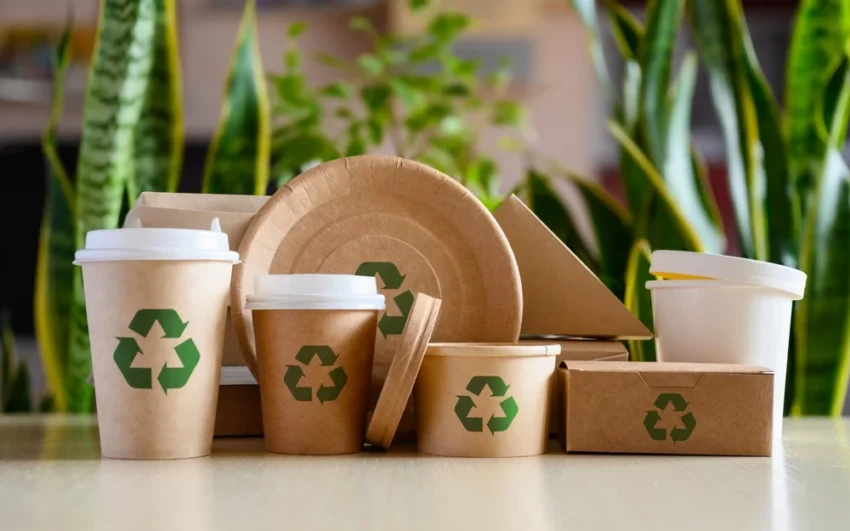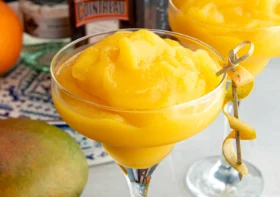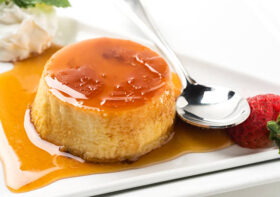10 Things to Consider When Designing Food Product Packaging

Anyone in the food industry, especially those focused on food packaging in Sydney, will find it exciting to create a new product. A new idea, planning, and packaging are key stages of the production process. You can never spend enough time designing packaging for products, especially in a bustling market like Sydney. Customers use the packaging to decide if they want to taste the food, making well-designed packaging essential. Without it, no one will buy your product, no matter how fantastic it might be.
Packaging tells the story of your brand, protects it during shipping, makes it easy to display and keeps it fresh. When designing the packaging for your food products, you need to take into account all of these aspects.
Here are 10 things you should consider when designing your packaging.
1. Brand Identity
Brand identity is more than just putting a logo on your product. Brands are recognized and people seek them out. Branding allows customers to find products that they know and love among the thousands of products on the market. Brand identity is important for:
- Building loyalty: Branding is what made Kleenex synonymous with tissues. Some brands have been able to cultivate customer loyalty through niche products that fit their lifestyle. Brandless has a powerful brand, despite the name. The simple packaging that has no name other than identifying what is inside speaks to people who are tired of constantly being sold to. Third Love is another company that has developed a loyal customer base. They sell bras that fit the natural curves of their customers.
Tell your story - Tells your company’s story: Each product has a purpose. Every company has a purpose for creating their food products, whether it is to sneakily add vegetables to your child’s food or create organic, GMO-free foods. Packaging can tell a story and help customers understand whether the food is healthy and pure, or fresh and natural.
- Customers are assured of the company’s stability: No one wants to love a product, only to see it disappear off the shelves. It is not surprising that small brands will struggle to survive when big brands like Borders and Toys R’ Us are struggling. Customers are more likely to buy a product if they have confidence in the brand.
- Small companies can look bigger: Small businesses often make the mistake of trying their best to save money and handle branding themselves. It can lead to a less-than-professional look. We’ve seen business cards that look like they were printed in a rush or websites that have been hand-made and are not user-friendly. These amateurish items could repel the very clients they were designed to attract and doom the business before it even gets started.
Spending extra time and money on your brand identity will help you make your product successful.
2. Form, Function and Beauty
It is a good idea to take a cue from the architectural design services when you are designing your packaging. Packaging must be appealing to encourage people to purchase it, but also functional. Sun Chips, for example, didn’t consider the noise level of the compostable bags when they tried to boost their brand with them. Sun Chips recalled the bags after videos were posted online of people measuring their decibels when opening the bags.
The compostable bag had a lot of potential in terms branding and aesthetics, but was far too loud to actually be useful. Packaging for food products must look great on shelves, be able to fit in with other products and protect the contents.
Colour Me Blind, on the other hand has nailed the concept with its highly functional line for grocery products targeted at the visually impaired. The products are slate gray with all embellishments raised to be felt and seen. The Braille and English words are both written to make it as easy for blind people to shop at the supermarket as for those who can see.
The brand aims to create a dialogue about the challenges faced by the blind. Packaging that combines beauty, function and branding makes the brand stand out.
3. Be Sure to Choose Packaging That Complements the Contents
As with cereals, cookies and other delicate foods, chips need to be packaged in a way that prevents them from breaking during shipping. Packaging for perishable products must be able to withstand condensation and other factors in the freezer section or refrigerator.
A customer’s expectation is also important to consider. Customers who are used to a can of soup with a pop-top may be disappointed if the can doesn’t come with one. Wax packaging is common for cheese but may not be as effective on other products.
Packaging must meet consumer expectations, be unique, and meet food safety regulations. All of these factors can be difficult to balance.
Pringles is a famous chip company that has achieved this feat with their iconic canisters. The canister protects the chips, preserves their flavor and meets customer expectations. This is a great example where a company has solved all of their packaging issues in an innovative manner.
4. Keep it Simple
As more and more food influencers scrutinize ingredient labels, it is important to convey the simplicity of your products. Labels are no longer cluttered with a lot of information and color.
Designers are now leaning towards packaging designs that place the focus of the product on a single image at the center and leave the rest of the package white. This design style creates an elegant, timeless look that is above all trends. This design style also makes your product appear cleaner and more versatile than other similar products.
Make sure that your packaging reflects the uniqueness of your product. Is the packaging 100% biodegradable and eco-friendly? Display it. Use you only a few simple ingredients in your product? Focus your packaging on the main ingredient.
5. Design Versatility
When you create a brand your customers enjoy and recognize, it’s a great feeling. What happens when it’s time to change the packaging of that brand? When your product is popular, you may find that consumers want it in different sizes, in bulk or in combination with other foods. If you do not design carefully, your design may not translate well onto different packages.
A design that is easily transferable to different packages sizes will help your brand last longer.
6. Introduce Limited Editions
Many of us rush out to the nearest coffee shop when the first autumn leaves start to turn. We want to buy the first pumpkin spice-flavored products on the market. Modern technology and transportation have made it possible for us to lose the seasonality that was once a major part of our culture. When food is always available, its appeal starts to diminish. Making something limited edition increases demand because customers know they have a short time to enjoy it.
This does not include seasonal items. Mountain Dew and Lay’s are known for their limited-edition drinks. You can get more customers to buy your product by creating a new flavor and only selling it occasionally.
7. Explore the Material Options
For several reasons, food packaging tends to rely on the same materials. Packaging isn’t just for aesthetics. Packaging must also protect food and maintain its freshness. This means that packaging materials are usually made of plastic, glass or other sanitary materials which are cost-effective.
You can stand out if you are in a niche food market by using materials that are not commonly used. Some dairy farms are now bottling milk in glass bottles instead of the usual plastic or cardboard containers. This is a novel idea that customers love.
Although food packaging is limited in terms of acceptable materials, using creative designs to highlight your product can help you stand out. Firewood Vodka is easily recognizable in a liquor shop because its outer packaging is made of wood.
The bottle is a bit whimsical, and its material contrasts the plastic and glass that surrounds it. This makes it an attractive item for shoppers. This is a perfect example of packaging that works – and a lesson for other packaging designers.
Cuberdons is another brand that has interesting packaging. They sell their cookies in glass jars, instead of rigid plastic. In the past they have also used interesting materials such as a hatbox containing their confections and a chardonnay from a partner company. This packaging is easy to recognize and reflects the luxury of the product, which matches with its brand image.
Finding materials that will make your package standout is a great way to beat the competition.
8. Save money by using creativity
It’s all very well to have elaborate packaging for luxury products, but what about those aimed at consumers with a smaller budget? It can be difficult to create a package that is attractive and appealing without using expensive materials. However, innovative packaging solutions can help reduce costs while still ensuring a great product.
Happy Eggs carton is one package that stands out for its uniqueness and low-cost materials. Maja Szcypek, a packaging designer, wanted to design a package that was unique, sustainable, and biodegradable. Egg cartons, while readily recyclable and biodegradable in most cases, still leave a carbon footprint.
Happy Eggs cartons, made of compressed hay and designed to look similar to a small haybale, are made out of compressed hay. Packaging materials are inexpensive, readily available and unique. They also suit the product perfectly.
It’s possible to create packaging that meets all of the needs of your product without it being prohibitively costly.
9. Discover Patterns and Color Options
A splash of color or a change in texture or pattern can attract consumers’ attention. WebPageFX requested that customers judge a product within 90 seconds. They found that 62 to 92 percent of respondents based their opinions solely on the packaging color.
You may even have less time to grab the attention of someone who is trying to choose a product when they are walking down an aisle in a supermarket. Consider the color and pattern when choosing your product.
Different colors have different effects on consumers. Yellow is one the colors that the brain processes the fastest. It stimulates appetite and also puts customers in a positive mood. Blue is seen as unappetizing by many customers, but it is also associated with honesty.
You can create packaging that is dominated by a single color by researching how your customers will perceive it.
10. The packaging can be used to highlight the benefits of the product
Customers often check the packaging when they pick up a product they are interested in to see if it offers the features they desire. Weight conscious people may check the number of calories, the carbohydrate content, or if it fits other dietary requirements. Others may want a spicy treat or a sweet snack.
Your packaging must highlight the most attractive features of your food to draw the right kind of customers. Is this meant to be healthy? Is it an exotic treat? The packaging should clearly state what the product offers.
It’s not always easy to communicate. It’s not easy to convey that pasta is a universal food. It can be difficult to create a package for customers that will inspire them, but one studio did it by creating a pasta packaging that allows consumers to receive one or two portions at a given time.



Leave a Reply